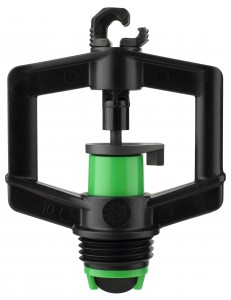Enhancing Water Efficiency with Drip Irrigation Systems
As the 2014 Oahe Farm and Ranch Show nears, Milt Morris and Tom Tveit laid out a new irrigation system they hope will improve local farming on Thursday. That’s when the two men watched as a crew of workers installed the tape for a drip irrigation system in a three acre plot next to the Oahe Speedway.
Using a tractor owned by Tveit, a local farm manager and crop consultant who has worked closely with Morris over the years, workers laid strips of drip tape, which is made of polyethylene, 30 inches apart from each other. The tape will be permanently buried 16 inches deep, allowing it to be at or below the roots of the corn Morris said will be planted on the plot.
Enhancing Water Efficiency with Drip Irrigation Systems Read More »

 Water is a precious commodity. Just ask California growers trying to navigate through a drought that is said to be one of the worst since the 1500s.
Water is a precious commodity. Just ask California growers trying to navigate through a drought that is said to be one of the worst since the 1500s. Another season has passed, and Bob McKellip is happy to report that his second year of utilizing
Another season has passed, and Bob McKellip is happy to report that his second year of utilizing 